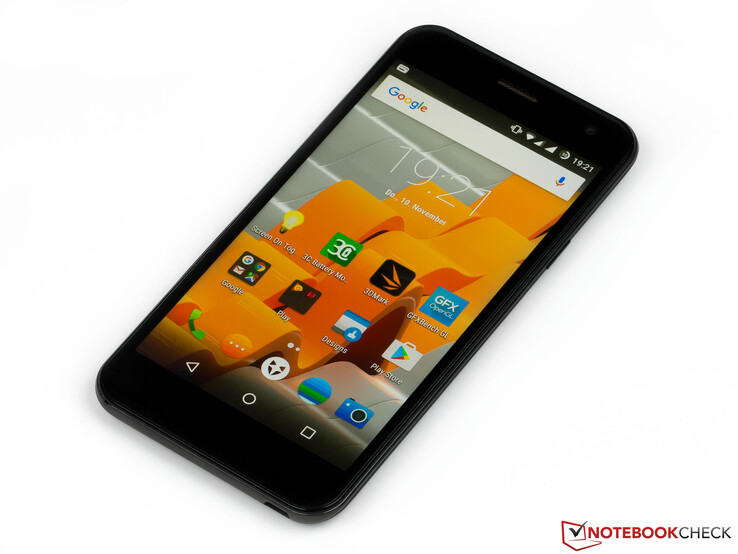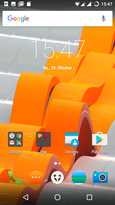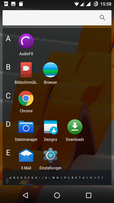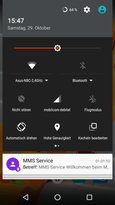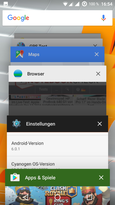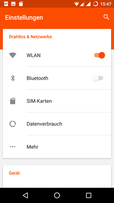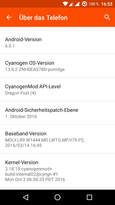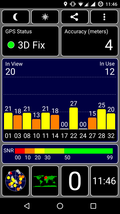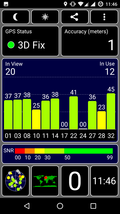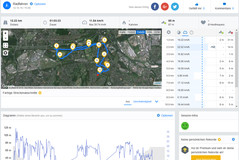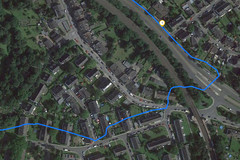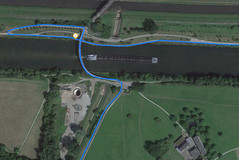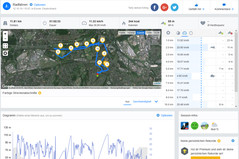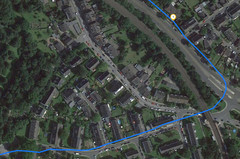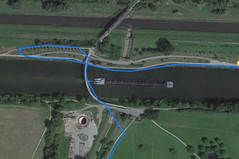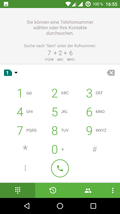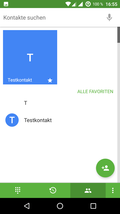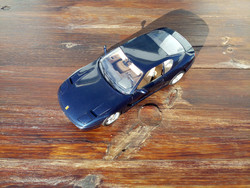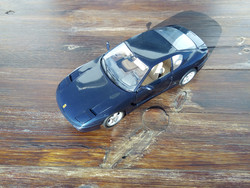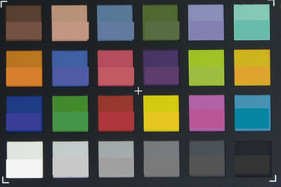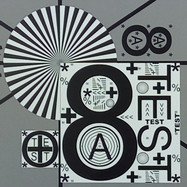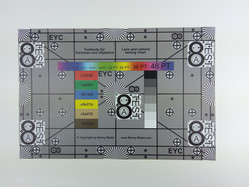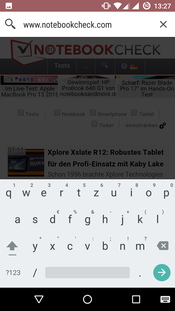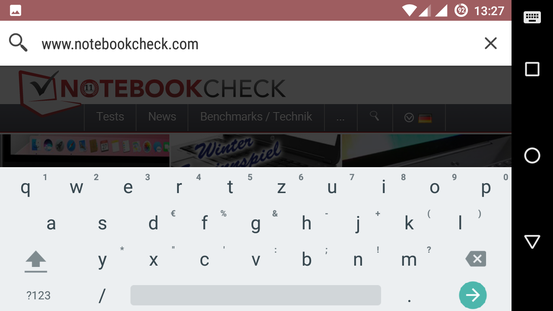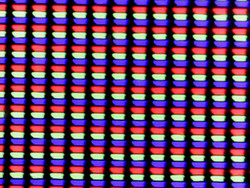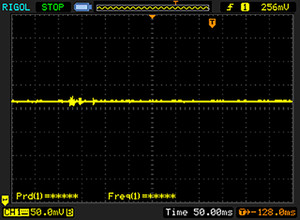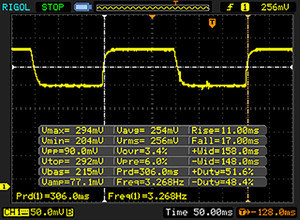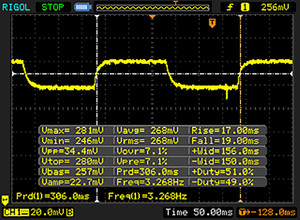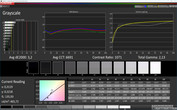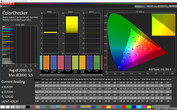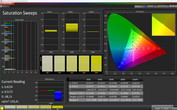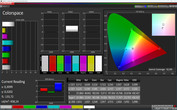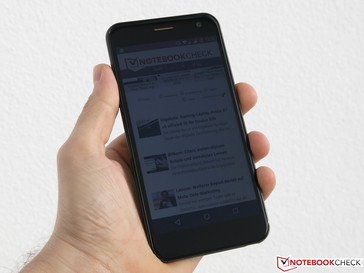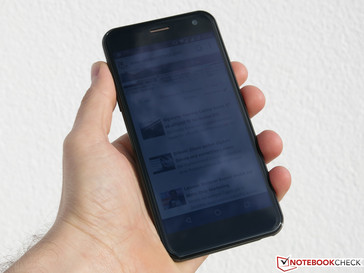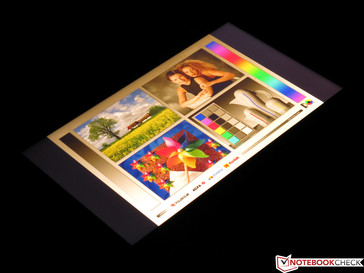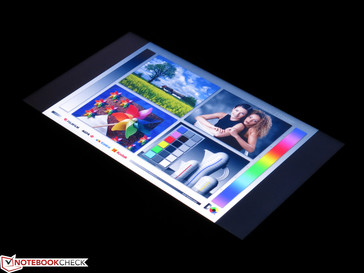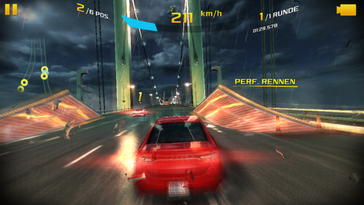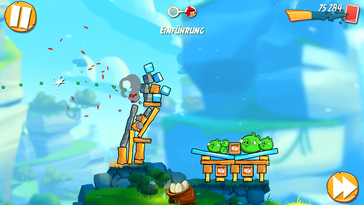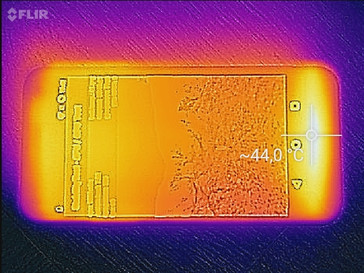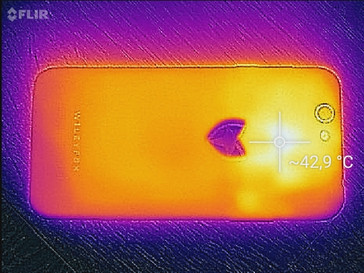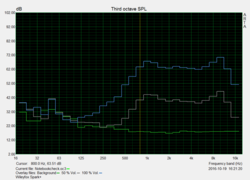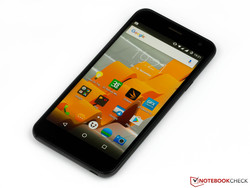Wileyfox Spark+ (Plus) Smartphone Review
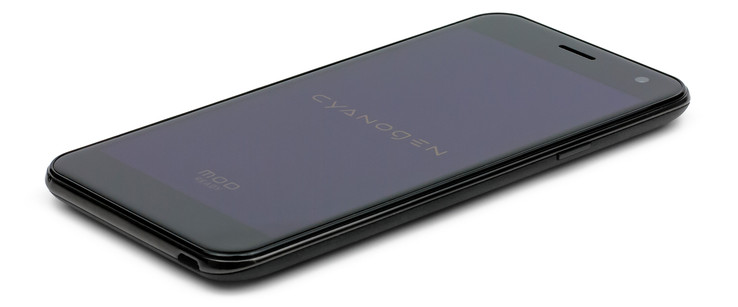
For the original German review, see here.
Wileyfox might be a young British company, but as their name implies, they move fast: they are launching their new smartphone, the Spark+ for 150 Euros (~$159). This device boasts of a 5-inch IPS screen, 2 GB of RAM and 16 GB of internal storage. It also features a removable battery, two micro SIM slots and a microSD card slot. In terms of price, our test model is placed around the middle in the Spark series. The cheaper model offers far less storage and the more expensive model shines with a larger display. The operating system is Cyanogen OS (based on Android 6).
Our test model is currently available only from the manufacturer or the online supplier, Amazon, for a price of 149 Euros (~$158). This pits it directly against other cheap, entry-level devices such as the ZTE Blade V7 lite, the TP-Link Neffos C5 or the Archos 50 Power. We are adding middle-class devices, such as the Lenovo Moto G4 Play and the HTC Desire 530, to our comparison list to get a more accurate reading of what this device is capable of.
Case
Although the case of the Wileyfox Spark+ is composed entirely of synthetic material, the sturdiness is still fine: the case bravely resists our attempts to bend it. It merely creaks slightly under pressure. The back of the device (sandstone black) is removable. Underneath, we find the removable battery and 3 card slots. The cover is slightly rough and easy to smudge or leave fingerprints on. Nonetheless, it is comfortable to hold and the back has a certain appeal thanks to the color and the stylish, copper-colored fox logo of the manufacturer.
The manufacturer uses a curved pane of Dragontail glass to protect the screen of our device. As the case is also curved, this 2.5D glass is more of an optical design element than anything else.
The measurements of the device are 8.65 x 143 x 70.4 mm (~0.34 x 5.6 x 2.8 in) and weighs 134.5 grams (~4.7 oz). Overall, the Spark+ meets all the standards typically set for entry-level devices.
Connectivity
The three card slots we mentioned previously are a big deal, as they allow the user to use dual SIM cards and a microSD memory card (to expand storage) simultaneously. Officially, the phone only supports microSD cards up to 32 GB, but we used our 64 GB card without any issues. The internal storage measures 16 GB, of which 10.7 GB is free for the user (the rest is for the OS and system).
The somewhat clumsy micro USB port does not support USB-OTG. Wireless transmission is possible thanks to Chromecast (no Miracast). Sadly, the internal compass of our test model did not work.
The smartphone has a small notification LED, but it can only light up red or green. As is typical for entry-level devices, the Spark+ has no fingerprint sensor. However, there are exceptions to this rule as the ZTE Blade V7 lite offers this sensor for a similar price.
Software
The device uses Cyanogen OS (version 13). This OS is based on Android 6.0.1 and offers a special design package. The user can choose whether or not to use this package. Wileyfox has not made any major software adjustments, which means that unnecessary programs do not come pre-installed on this device. In comparison to the standard Android, the system can be customized further, thanks to the extra individual options. We also like the ability to quickly swap between the previously-used App and the current App, by pressing the right navigation key for a short time.
Communication and GPS
The two SIM slots of the Wileyfox Spark+ support LTE CAT 4 (150 MB/s download, 50 MB/s upload), but only one SIM card can use the data connection at a time. The reception quality in urban areas was acceptable.
Contrary to the official specifications, not only does the test model support the 2.4 GHz frequency, but also the 5 GHz frequency. However, the range is very limited and our connection with the 5 GHz network was much worse than with a 2.4 GHz network. With max 87.1 MB/s receiving and 74.2 MB/s sending speeds, the Spark+ communicates at an acceptable level for an entry-level device with the reference router, the Linksys EA8500. Middle-class smartphones, like the Lenovo Moto Z Play, easily outpace our test model. Thankfully, Bluetooth 4.1 is included for wireless communication.
| Networking | |
| iperf3 transmit AX12 | |
| Google Pixel XL 2016 | |
| Lenovo Moto Z Play | |
| Wileyfox Spark Plus | |
| LG X Power K220 | |
| Coolpad Modena 2 | |
| iperf3 receive AX12 | |
| Google Pixel XL 2016 | |
| Lenovo Moto Z Play | |
| Wileyfox Spark Plus | |
| LG X Power K220 | |
| Coolpad Modena 2 | |
According to the "GPS test" App, the Spark+ works very accurately outdoors (accurate up to one meter/~3 ft). The accuracy indoors is up to 4 meters (~13 ft). The communication with satellites appears to be quite fast.
Do these great numbers hold up in actual use? To test this, we took the smartphone for a bike tour with our professional navigation GPS, the Garmin Edge 500. The Spark+ performed decently, but in some difficult parts, like river crossings or underpasses below the railway, the test model deviates from the path recorded by the reliable Garmin GPS. However, the Spark+ can offer a decent performance for everyday use.
Telephone and Speech Quality
The telephone App of Cyanogen OS is a tweaked version of the standard App from Android Marshmallow, since, despite the different layout, most of the features of the Apps are the same. The App is broken into three tabs: a dialling pad, a caller log and a phone book, which includes a "Favorites" list and a search bar at the top. Furthermore, the device offers a "Truecaller" feature, which should help the user identify callers from unidentified numbers.
While calling normally, the audio on both sides was clear and audible. There was only a single indication that our test model was an entry-level: the sound was slightly dull. If the integrated speaker is turned on, the sound gets a little worse, but the audio remains coherent on both sides, as long as the Wileyfox caller is in a quiet environment.
Cameras
The main camera of the Wileyfox Spark+ offers a resolution of 13.4 MP and an f/2.8 shutter. When using the phone for daylight photo shoots, the images look good (relative to its price) with decent details and sharpness. The weaknesses of the camera become noticeable when capturing shots of plants (scene 1). As conditions worsen, the image quality drops: the autofocus can no longer adjust the sharpness of the image reliably and the pictures turn blurry. As the camera lacks an image stabilizer, many shots end up shaky (scene 3).
The webcam on the front offers 8 MP, but has no autofocus. Outdoors, photos have a lot of details in good lighting conditions. In poorer conditions, the details disappear.
Videos can be recorded in Full HD with the main camera. In bright lighting, the videos are quite nice, but following the pattern above, as soon as the conditions worsen, the videos become much less attractive. The webcam works very similarly to the main camera, but records videos at a lower resolution of 1280x720 pixels.
The camera App can be launched with a double-click on the power button (from standby mode). However, it is not always comfortable to use, as the user has to tap on very small buttons to activate many features. Different modes, such as "Night Capture" or "Party", can be selected with the vertical swipe gesture, but hand-held HDR captures turn out shaky (even in daylight).
Accessories and Warranty
The smartphone is delivered with high-quality packaging. However, this packet only includes the phone, a flat USB cable (60 cm/~24 in), a picture manual and a multi-lingual warranty handbook. A headset or power adapter are not included in the delivery.
For an extra cost, the manufacturer offers a protective sleeve for the phone (red or black for 14.99 Euros/~$16) and a protective glass display pane for 11.99 Euros (~$13).
Wileyfox guarantees the device for 2 years and limits the warranty on the battery to 6 months.
Input Devices and Interface
Out-of-the-box, the Wileyfox Spark+ has a standard Android keyboard. Thanks to the precise touchscreen and powerful vibration, the user can input their commands reliably. The user can also use swipe gestures to type. The power button and volume rocker are made of synthetic material, but they have clear pressure points and are seamlessly integrated in the case.
We like that the touchscreen can be activated by tapping it twice. The reverse is also possible: two taps on the status bar will put the phone in standby mode. Both functions must first be turned on in the display settings.
We did not notice any major hiccups while using the phone. While scrolling, there were slight issues, but most users will not even notice these. The relatively long loading times of the Apps are more noticeable. Complex games or benchmarks take incredibly long to start up.
Display
The 5-inch display of the Spark+ has a resolution of 1280x720 pixels (typical for this class). The pixel density of the phone is 294 PPI, which ensures that the content shown on this screen is sharp. If you look at the IPS panel closer up, the pixel structure is noticeable.
The average brightness of 471 cd/m² is quite good with a white picture. When we measured the brightness again with evenly distributed bright and dark areas (Average Picture Level/APL 50), we found the brightness to be between 456 cd/m² and 467 cd/m² near the middle of the panel. When the brightness sensor is turned on, the display can reach up to 475 cd/m². The display does not have a PWM control; therefore we did not notice any flickering. We dislike the uneven illumination and the relatively slow auto-brightness control.
| |||||||||||||||||||||||||
Brightness Distribution: 82 %
Center on Battery: 456 cd/m²
Contrast: 1060:1 (Black: 0.43 cd/m²)
ΔE ColorChecker Calman: 3.5 | ∀{0.5-29.43 Ø4.78}
ΔE Greyscale Calman: 3.2 | ∀{0.09-98 Ø5}
Gamma: 2.13
CCT: 6691 K
| Wileyfox Spark Plus IPS, 1280x720, 5" | ZTE Blade V7 Lite IPS, 1280x720, 5" | TP-Link Neffos C5 IPS, 1280x720, 5" | HTC Desire 530 IPS, 1280x720, 5" | Lenovo Moto G4 Play IPS, 1280x720, 5" | Archos 50 Power IPS, 1280x720, 5" | |
|---|---|---|---|---|---|---|
| Screen | ||||||
| Brightness middle (cd/m²) | 456 | 312 -32% | 508 11% | 375 -18% | 412 -10% | 304 -33% |
| Brightness (cd/m²) | 471 | 302 -36% | 491 4% | 376 -20% | 414 -12% | 311 -34% |
| Brightness Distribution (%) | 82 | 79 -4% | 89 9% | 91 11% | 94 15% | 83 1% |
| Black Level * (cd/m²) | 0.43 | 0.15 65% | 0.58 -35% | 0.32 26% | 0.42 2% | 0.31 28% |
| Contrast (:1) | 1060 | 2080 96% | 876 -17% | 1172 11% | 981 -7% | 981 -7% |
| Colorchecker dE 2000 * | 3.5 | 8.2 -134% | 7 -100% | 6 -71% | 5.6 -60% | 5.9 -69% |
| Colorchecker dE 2000 max. * | 5.5 | 16.5 -200% | 14.1 -156% | 9.5 -73% | 9.7 -76% | 14.3 -160% |
| Greyscale dE 2000 * | 3.2 | 9.2 -188% | 6.1 -91% | 4.5 -41% | 6.9 -116% | 4.6 -44% |
| Gamma | 2.13 103% | 2.29 96% | 2.15 102% | 2.26 97% | 2.4 92% | 2.51 88% |
| CCT | 6691 97% | 9017 72% | 8068 81% | 6975 93% | 8422 77% | 7088 92% |
* ... smaller is better
Screen Flickering / PWM (Pulse-Width Modulation)
| Screen flickering / PWM not detected | |||
In comparison: 53 % of all tested devices do not use PWM to dim the display. If PWM was detected, an average of 8108 (minimum: 5 - maximum: 343500) Hz was measured. | |||
Display Response Times
| ↔ Response Time Black to White | ||
|---|---|---|
| 28 ms ... rise ↗ and fall ↘ combined | ↗ 11 ms rise | |
| ↘ 17 ms fall | ||
| The screen shows relatively slow response rates in our tests and may be too slow for gamers. In comparison, all tested devices range from 0.1 (minimum) to 240 (maximum) ms. » 70 % of all devices are better. This means that the measured response time is worse than the average of all tested devices (20.2 ms). | ||
| ↔ Response Time 50% Grey to 80% Grey | ||
| 36 ms ... rise ↗ and fall ↘ combined | ↗ 17 ms rise | |
| ↘ 19 ms fall | ||
| The screen shows slow response rates in our tests and will be unsatisfactory for gamers. In comparison, all tested devices range from 0.165 (minimum) to 636 (maximum) ms. » 49 % of all devices are better. This means that the measured response time is worse than the average of all tested devices (31.6 ms). | ||
For an entry-level device, the display has a great calibration. The color temperature measures 6,691 K and is close to the optimal of 6,500 K. There is no blue tinge. The average Delta-E values are also quite close to the ideal with 3.2 (grey levels) and 3.5 (colors). The optimal range should be lower than 3.
Although our test model has an IPS panel, the viewing angles are not always great: the diagonal viewing angles show deviations to warmer or cooler color tones. Furthermore, the content gets brighter or darker depending on the angle. Other entry-level devices show similar problems (see HTC Desire 530). We appreciate that the colors never invert.
Performance
On the inside, a Mediatek-MT6735-SoC, with 2 GB of RAM, keeps the device running. The quad-core chip uses 4 Cortex A53 cores, which run at 1.3 GHz. The ARM-Mali-T720-MP2-GPU is responsible for graphics processing.
The results of GFXBench and 3DMark are especially good. The Spark+ hits the top of the tablet in the practical on-screen tests. In Androbench, we noticed a weakness: the write speed of the internal memory is relatively weak (especially the sequential write speed of 12.24 MB/s). Only the Lenovo Moto G4 Play has a faster memory card slot, but our reference memory card, the Toshiba Exceria Pro M401 (THN-M401S0640E2, UHS-I Class 3, max. read: 95 MB/s, max. write: 80 MB/s), is never pushed to its limits. Compared with the others, the Spark+ has an above-average performance in the browser tests.
| AnTuTu v6 - Total Score (sort by value) | |
| Wileyfox Spark Plus | |
| ZTE Blade V7 Lite | |
| TP-Link Neffos C5 | |
| HTC Desire 530 | |
| Lenovo Moto G4 Play | |
| Archos 50 Power | |
| Geekbench 4.0 | |
| 64 Bit Multi-Core Score (sort by value) | |
| Wileyfox Spark Plus | |
| 64 Bit Single-Core Score (sort by value) | |
| Wileyfox Spark Plus | |
| Compute RenderScript Score (sort by value) | |
| Wileyfox Spark Plus | |
| PCMark for Android - Work performance score (sort by value) | |
| Wileyfox Spark Plus | |
| TP-Link Neffos C5 | |
| HTC Desire 530 | |
| Lenovo Moto G4 Play | |
| Archos 50 Power | |
| Octane V2 - Total Score (sort by value) | |
| Wileyfox Spark Plus | |
| ZTE Blade V7 Lite | |
| TP-Link Neffos C5 | |
| HTC Desire 530 | |
| Lenovo Moto G4 Play | |
| Archos 50 Power | |
| Mozilla Kraken 1.1 - Total (sort by value) | |
| Wileyfox Spark Plus | |
| ZTE Blade V7 Lite | |
| TP-Link Neffos C5 | |
| HTC Desire 530 | |
| Lenovo Moto G4 Play | |
| Archos 50 Power | |
| JetStream 1.1 - Total Score (sort by value) | |
| Wileyfox Spark Plus | |
| ZTE Blade V7 Lite | |
| TP-Link Neffos C5 | |
| HTC Desire 530 | |
| Lenovo Moto G4 Play | |
| Archos 50 Power | |
| GFXBench (DX / GLBenchmark) 2.7 | |
| T-Rex Onscreen (sort by value) | |
| Wileyfox Spark Plus | |
| ZTE Blade V7 Lite | |
| TP-Link Neffos C5 | |
| HTC Desire 530 | |
| Lenovo Moto G4 Play | |
| Archos 50 Power | |
| 1920x1080 T-Rex Offscreen (sort by value) | |
| Wileyfox Spark Plus | |
| ZTE Blade V7 Lite | |
| TP-Link Neffos C5 | |
| HTC Desire 530 | |
| Lenovo Moto G4 Play | |
| Archos 50 Power | |
| GFXBench 3.0 | |
| 1920x1080 1080p Manhattan Offscreen (sort by value) | |
| Wileyfox Spark Plus | |
| ZTE Blade V7 Lite | |
| TP-Link Neffos C5 | |
| HTC Desire 530 | |
| Lenovo Moto G4 Play | |
| Archos 50 Power | |
| on screen Manhattan Onscreen OGL (sort by value) | |
| Wileyfox Spark Plus | |
| ZTE Blade V7 Lite | |
| TP-Link Neffos C5 | |
| HTC Desire 530 | |
| Lenovo Moto G4 Play | |
| Archos 50 Power | |
| GFXBench 3.1 | |
| 1920x1080 Manhattan ES 3.1 Offscreen (sort by value) | |
| Wileyfox Spark Plus | |
| ZTE Blade V7 Lite | |
| Archos 50 Power | |
| on screen Manhattan ES 3.1 Onscreen (sort by value) | |
| Wileyfox Spark Plus | |
| ZTE Blade V7 Lite | |
| Archos 50 Power | |
| 3DMark | |
| 1280x720 offscreen Ice Storm Unlimited Physics (sort by value) | |
| Wileyfox Spark Plus | |
| ZTE Blade V7 Lite | |
| TP-Link Neffos C5 | |
| HTC Desire 530 | |
| Lenovo Moto G4 Play | |
| Archos 50 Power | |
| 1280x720 offscreen Ice Storm Unlimited Graphics Score (sort by value) | |
| Wileyfox Spark Plus | |
| ZTE Blade V7 Lite | |
| TP-Link Neffos C5 | |
| HTC Desire 530 | |
| Lenovo Moto G4 Play | |
| Archos 50 Power | |
| 1280x720 offscreen Ice Storm Unlimited Score (sort by value) | |
| Wileyfox Spark Plus | |
| ZTE Blade V7 Lite | |
| TP-Link Neffos C5 | |
| HTC Desire 530 | |
| Lenovo Moto G4 Play | |
| Archos 50 Power | |
| 2560x1440 Sling Shot OpenGL ES 3.0 Physics (sort by value) | |
| Wileyfox Spark Plus | |
| ZTE Blade V7 Lite | |
| TP-Link Neffos C5 | |
| Lenovo Moto G4 Play | |
| 2560x1440 Sling Shot OpenGL ES 3.0 Graphics (sort by value) | |
| Wileyfox Spark Plus | |
| ZTE Blade V7 Lite | |
| TP-Link Neffos C5 | |
| Lenovo Moto G4 Play | |
| 2560x1440 Sling Shot OpenGL ES 3.0 (sort by value) | |
| Wileyfox Spark Plus | |
| ZTE Blade V7 Lite | |
| TP-Link Neffos C5 | |
| Lenovo Moto G4 Play | |
| Archos 50 Power | |
* ... smaller is better
Games
Due to the modest resolution, the Mali-T720-MP2-GPU can run most games with ease. In “Asphalt 8”, we observed slight stutters at the highest settings, but the game does run. The details need to be reduced slightly for the game to run smoothly. Less demanding games, like “Angry Birds 2”, run on the Spark+ without any issues.
Emissions
Temperature
While idle, the device can reach up to 39.7 °C (~103 °F). The Wileyfox Spark+ heats up significantly near the navigation bar (with slight load). At constant load, the temperatures rise above 40 °C (~104 °F) over larger areas, but they never get critical. Subjectively, the temperatures feel acceptable.
(±) The maximum temperature on the upper side is 41.9 °C / 107 F, compared to the average of 35.2 °C / 95 F, ranging from 21.9 to 247 °C for the class Smartphone.
(±) The bottom heats up to a maximum of 42.2 °C / 108 F, compared to the average of 34 °C / 93 F
(±) In idle usage, the average temperature for the upper side is 34.8 °C / 95 F, compared to the device average of 32.9 °C / 91 F.
Speakers
The mono speaker on the back of the Spark+ lacks volume: it can reach a maximum of 76.4 dB(A) in our pink noise test. This will make it too quiet for most noisy environments. The output sounds good, but the deep notes are not noticeable. The disadvantage of positioning the speaker on the back is that the user might accidentally muffle it while holding the device and the sound changes noticeably, depending on the position of the speaker.
The AudioFX App allows the sound to be tweaked and different profiles can be saved for the speaker and the headphones. The audio quality via the 3.5 mm jack is decent. The internal amplifier turns off after a few seconds with a quiet click.
Wileyfox Spark Plus audio analysis
(±) | speaker loudness is average but good (76.4 dB)
Bass 100 - 315 Hz
(-) | nearly no bass - on average 31% lower than median
(+) | bass is linear (6.1% delta to prev. frequency)
Mids 400 - 2000 Hz
(±) | reduced mids - on average 6.1% lower than median
(±) | linearity of mids is average (9.4% delta to prev. frequency)
Highs 2 - 16 kHz
(+) | balanced highs - only 2.4% away from median
(+) | highs are linear (3.8% delta to prev. frequency)
Overall 100 - 16.000 Hz
(±) | linearity of overall sound is average (27.3% difference to median)
Compared to same class
» 70% of all tested devices in this class were better, 5% similar, 24% worse
» The best had a delta of 11%, average was 35%, worst was 134%
Compared to all devices tested
» 83% of all tested devices were better, 4% similar, 13% worse
» The best had a delta of 4%, average was 24%, worst was 134%
HTC Desire 530 audio analysis
(+) | speakers can play relatively loud (87.4 dB)
Bass 100 - 315 Hz
(-) | nearly no bass - on average 41% lower than median
(+) | bass is linear (4.1% delta to prev. frequency)
Mids 400 - 2000 Hz
(±) | reduced mids - on average 7.8% lower than median
(±) | linearity of mids is average (10.8% delta to prev. frequency)
Highs 2 - 16 kHz
(±) | higher highs - on average 7.4% higher than median
(+) | highs are linear (5.7% delta to prev. frequency)
Overall 100 - 16.000 Hz
(-) | overall sound is not linear (31.2% difference to median)
Compared to same class
» 80% of all tested devices in this class were better, 3% similar, 17% worse
» The best had a delta of 11%, average was 35%, worst was 134%
Compared to all devices tested
» 90% of all tested devices were better, 2% similar, 8% worse
» The best had a delta of 4%, average was 24%, worst was 134%
Frequency diagram for comparison (checkboxes above can be selected!)
Energy Management
Power Consumption
In terms of power consumption, the test model places itself right in the middle of the comparison devices. The HTC Desire 530 needs more power than the Wileyfox Spark+, while the ZTE Blade V7 lite needs less.
| Off / Standby | |
| Idle | |
| Load |
|
Key:
min: | |
| Wileyfox Spark Plus 2200 mAh | ZTE Blade V7 Lite 2500 mAh | TP-Link Neffos C5 2200 mAh | HTC Desire 530 2200 mAh | Lenovo Moto G4 Play 2800 mAh | Archos 50 Power 4000 mAh | |
|---|---|---|---|---|---|---|
| Power Consumption | 32% | -4% | -30% | 25% | -31% | |
| Idle Minimum * (Watt) | 0.87 | 0.63 28% | 0.72 17% | 1.58 -82% | 0.68 22% | 1.66 -91% |
| Idle Average * (Watt) | 2.13 | 1.37 36% | 1.87 12% | 2.59 -22% | 1.58 26% | 2.88 -35% |
| Idle Maximum * (Watt) | 2.27 | 1.71 25% | 2 12% | 2.66 -17% | 1.61 29% | 3.46 -52% |
| Load Average * (Watt) | 4.74 | 2.82 41% | 5.99 -26% | 5.22 -10% | 3.36 29% | 3.96 16% |
| Load Maximum * (Watt) | 4.77 | 3.36 30% | 6.45 -35% | 5.67 -19% | 3.91 18% | 4.34 9% |
* ... smaller is better
Battery Life
Despite the average consumption of the Spark+, the devices performs the WLAN battery test poorly and lands in last place. The battery is not very large (2200 mAh) and the competitors offer more: although 7 hours is not a bad run time, the device is outclassed heavily. The Lenovo Moto G4 Play offers 50% more battery life, as it is especially conservative.
The Spark+ has no power adapter, which means that the user will have to procure one. For a full charge, the user will need to wait around 4 hours. It is not possible to reduce this load time by using a more powerful adapter, as, according to the technical specifications, the phone can only be charged with a (max) 5-watt adapter. We noticed that the remaining time to charge the battery fully was never accurate.
| Wileyfox Spark Plus 2200 mAh | ZTE Blade V7 Lite 2500 mAh | TP-Link Neffos C5 2200 mAh | HTC Desire 530 2200 mAh | Lenovo Moto G4 Play 2800 mAh | Archos 50 Power 4000 mAh | |
|---|---|---|---|---|---|---|
| Battery runtime | ||||||
| WiFi v1.3 (h) | 7 | 8.6 23% | 7.6 9% | 7.1 1% | 10.5 50% | 9.9 41% |
Pros
Cons
Verdict
The nice packaging of the Wileyfox Spark+ is an indication that this phone aims to do more with less money. On the other hand, the package contents show the limits of an entry-level device. The smartphone has to sacrifice some features, such as a fingerprint sensor or USB-OTG, but the manufacturer has made sure that the workmanship is good. We like the bright display, the precise touchscreen and the photo quality with good lighting conditions. The two micro SIM slots and single microSD slot will be attractive points for some buyers. The smooth interface and sufficient performance round off the package.
The Wileyfox Spark+ offers a lot of smartphone for very little money. The device lacks some extra features and has poor picture quality in darker surroundings.
The hardware of the test model is similar to the 150-Euro (~$159) ZTE Blade V7 lite, but the important difference is that ZTE has an aluminium case and a fingerprint sensor. Unlike our test model, the ZTE device has an integrated battery and lacks a third card slot. It also suffers from a darker display.
Wileyfox Spark Plus
- 11/21/2016 v5.1 (old)
Andreas Kilian




